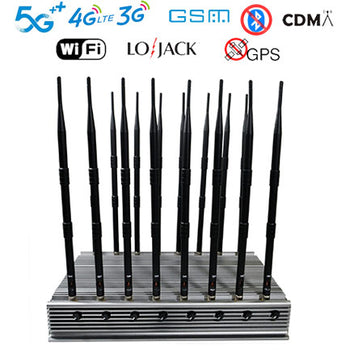What if I use a jammer to confront a thief?
Wireless home automation systems have several advantages, especially in terms of convenience and savings. This is because most equipment is easy to install and usually does not require restrictive electrical changes or intervention by an electrician. However, there are risks associated with this installation. In fact, anti-theft devices with sabotage can enter the house without installation. Christoph of Ziblue describes the right steps to avoid this kind of unauthorized intrusion as much as possible.
1-What is interference?
First, remember that jamming devices are banned in France and most European countries. However, getting it on the internet doesn't seem to be that complicated (200-300 euros). Interference is the spread of information clouds that impede communication between elements. The message is sent by the sensor but not heard from the center console. Imagine two people chatting at a bar and a soccer team singing to celebrate their victory. The two will face each other forever, but they can no longer get along.
2-Why does anti-theft use jamming devices?
Signal jammers paralyze objects connected to numerous radio alarms. The same jammer was used to steal a car. 70% of car thefts are done using portable jammer and other electronic cards. Radio alarm paralysis allows thieves to enter homes, stores or other places without reporting their presence.
3-How many thefts are done each year using this method?
Estimating theft using these jammers is very difficult because it cannot be tracked by definition. However, the Home Office pointed out that 50% of the intrusions occurred with and without intrusions (including many options). Or about 280,000 in 2016.

4-Can paper jams be avoided?
No, but we can prevent it. RFPlayers at frequencies of 433MHz and 868MHz signal that interference has begun or is occurring, and malicious behavior can soon occur, such as at home or at work.
5-Is there a risk of failure if using an anti-jamming system?
From a marketing perspective, there are some claims that wireless alarms or home automation systems can protect users from interference. The most common ones are:
Dual frequency communication: Most of the jammers displayed on the website cover both frequencies and will not work.
GSM and 4G interference detection: This type of interference prevents communication with the outdoor platform, but if the center console does not receive the message indoors, the sensor will not send and the sensor will not work.
6-How to warn of malfunctions?
RFPlayer and its Jam’Alert feature connect to the most important home automation solutions on the market such as Eedomus, Jeedom and Vera. Scenes in these boxes can be sent by email, SMS, or wired alarm after receiving the information. If you don't have a home automation device, there is also an Android Jam’Alert app (Google Play) that can be connected to a small TV box (Android) or tablet to automatically send SMS notifications for interference detection.
7-What alert do you receive if your device can communicate wirelessly and cannot be used due to this interference?
As mentioned earlier, Android's Jam’Alert application is SMS. If you are connected to a home automation device, it depends on the services you provide (SMS, email, etc.). The idea is to avoid theft. In addition to the warning message, the best solution is to trigger a small siren to make the thief think that the use of the jammer is not working.
8-How can I receive alert SMS if I know that GSM also uses wireless communication?
Since the home automation box or Android TV box communicates directly with the communication box via Ethernet, GSM interference does not affect Jam’Alert text messages or emails.
9-In addition to SMS, various notification methods are recommended.
This is not always the case, as SMS will notify you of the opposite email immediately. Opposite emails can be stored in a spam box or drowned in all emails.
10-Despite these warnings, how can we prevent this thief from stealing our property?
A small wired alarm seems to be the easiest for us, but you can also contact your security officer or your neighbors. If the house is encrypted by a disturber, the blinds cannot be closed and the lights turned on, making all simulation scenes on the scene unavailable. External information is required.













